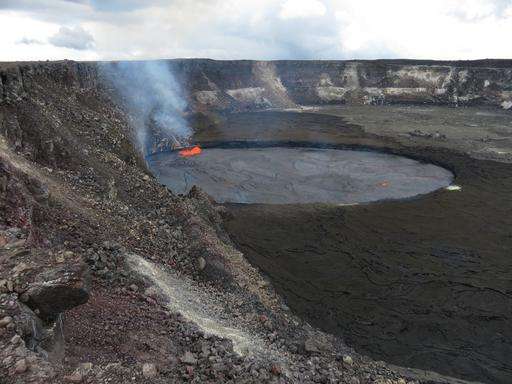At http://phys.org/print392883815.html … stalagmites from a cave in Indiana may contain traces of evidence of prehistoric earthquakes. The caves are in the Wabash Valley and on a fault system (published in the Bulletin of the Seismological Society of America, September 2016). They also record episodes of glacial flooding of the Wabash Valley (note … the location is in southern Indiana, well away from the Ice Age ice sheets).
When a stalagmite is sliced down the middle, shifts in its axis of growth are visible (which may reflect seismic phenomena). For example, one stalagmite stopped growing around 100,000 years ago (calculation) and resumed growth around 6000 years ago (following what is thought to have been an earthquake that affected the way the cave dripped water). Earthquakes have also been calculated using palaeoliquifaction processes in sediments.
At http://phys.org/print392904357.html … we learn that high tides as a result of the sun and the moon may also trigger earthquakes. For example, earthquakes may respond to spring tides (following a New Moon) according to the study in Nature Geosciences (Sept 2016). This idea has cropped up in SIS publications in the past – especially in relation to megalithic monuments laid out to predict the extremities of the moon's orbit through the year.
 At http://phys.org/print392871978.html … lava lakes on top of a Hawaii volcano – is rising. Something similar has been happening in Japan.
At http://phys.org/print392871978.html … lava lakes on top of a Hawaii volcano – is rising. Something similar has been happening in Japan.
At http://phys.org/print392889118.html … we are told that magnetic attraction helps explain the motion under the oceans (geoplate activity). When dating and tracking the evolution of oceanic crust the Plate Tectonics hypothesis uses periods when the polarity of the planet's geomagnetic field was reversed (the so called magentic stripes on the sea floor). After volcanic activity the magma cools at the mid ocean ridge, it is claimed, and minerals within the new rock magnetise and align with the direction of the planet's magnetic field. Therefore, it is thought the stripes represent periods when magetism has reverse and proves that the ocean floor is expanding. It is expanding in the Plate Tectonics hypothesis and in the Expanding Earth hypothesis so there is little to argue here – except that stripes are not universally found across the ocean floors (which requires the movement of oceanic plates also as the pattern does not conform to the initial form of the hypothesis). The European Geoplate Project is currently looking into the problems in the mainstream model in the hope of ironing them out. The idea is to examine plate motion, particularly during and at the end of the Cretaceous Period (when an asteroid is thought to have created a crater in the Yucatan). Traces of change in the geomagnetic field were found – coinciding with movements of the plates. The research is worth clicking on – http://cordis.europa.eu/project/rcn/104252_en.html
